Here, we’ll explore a clever and sustainable way to start plants using eggshells. You can do this to get a jump on your spring garden, even if there’s snow on the ground or you have freezing temperatures outside. Turning kitchen waste into a thriving garden is eco-friendly and cost-effective. This is also a great activity to involve your kids in and introduce them to gardening. I will guide you step-by-step through this process and stick around to the end to discover why this method will give you better results and bigger, meatier vegetables.
Start by saving your eggshells after cooking or baking. Rinse them thoroughly to remove any residue. You will have to be more careful with how you open your eggs. The best eggshells for this process will just have the top taken off. I find that using a sharp knife to open the top areas is the easiest method for removing the top, instead of cracking them in half.
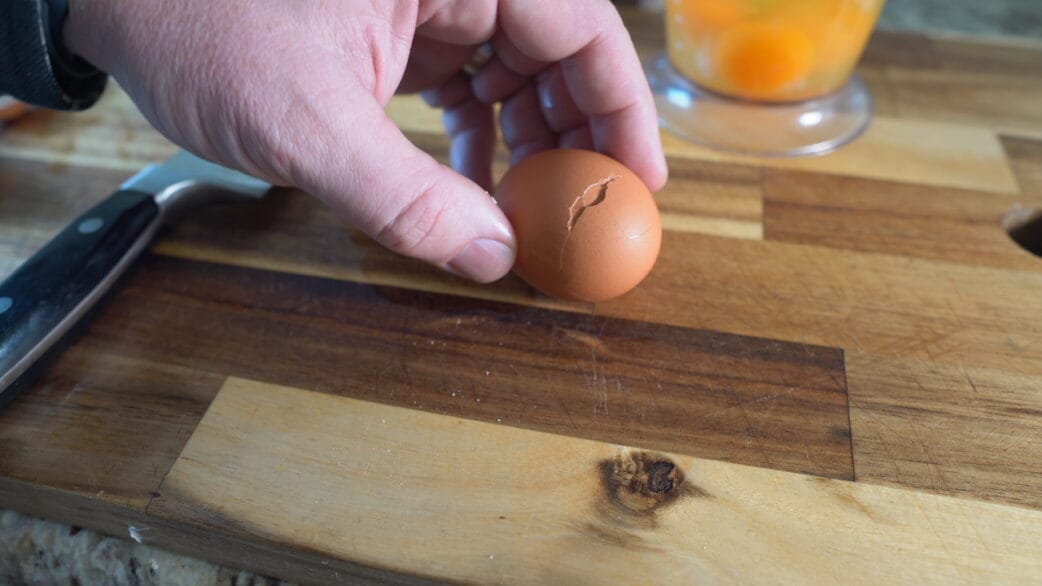
Rinsing the shell’s interior and removing the inner membrane are essential steps in preparing the eggshells for planting. This process helps to remove any remaining residue, providing a clean environment for the seeds to germinate and grow. Once the shells are thoroughly cleaned, discarding the inner membrane is essential, as it can hinder the growth of the seedlings if left inside the shell.
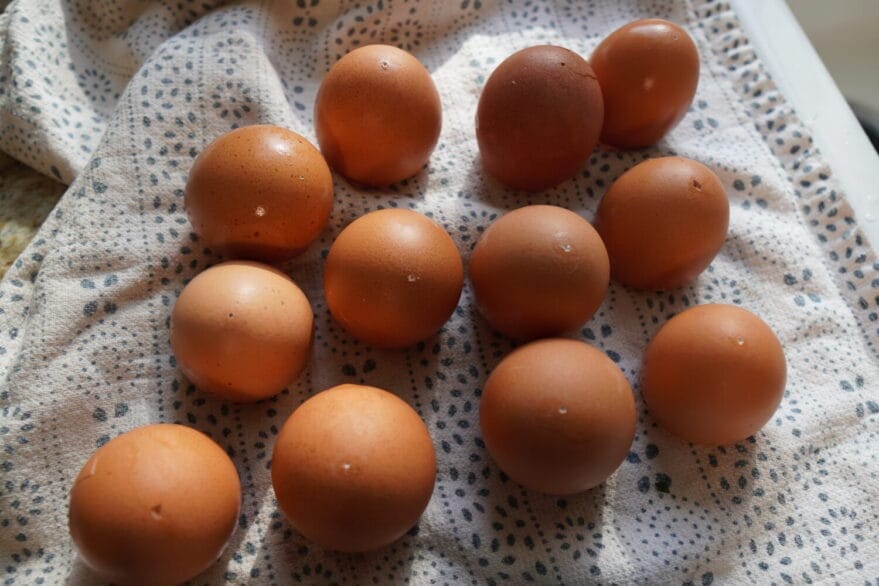
After cleaning the eggshells, the next step is to create drainage holes in the bottom of each shell. Carefully poke a small hole in the bottom using a push pin or safety pin. This simple but crucial step allows excess water to drain out of the eggshell, preventing waterlogging and promoting healthy root growth in the seedlings.
To prep the egg crate, simply cutoff the tab, then cut it in half. You can discard the tab but keep the lid, as we will use it later in this process as an added base.
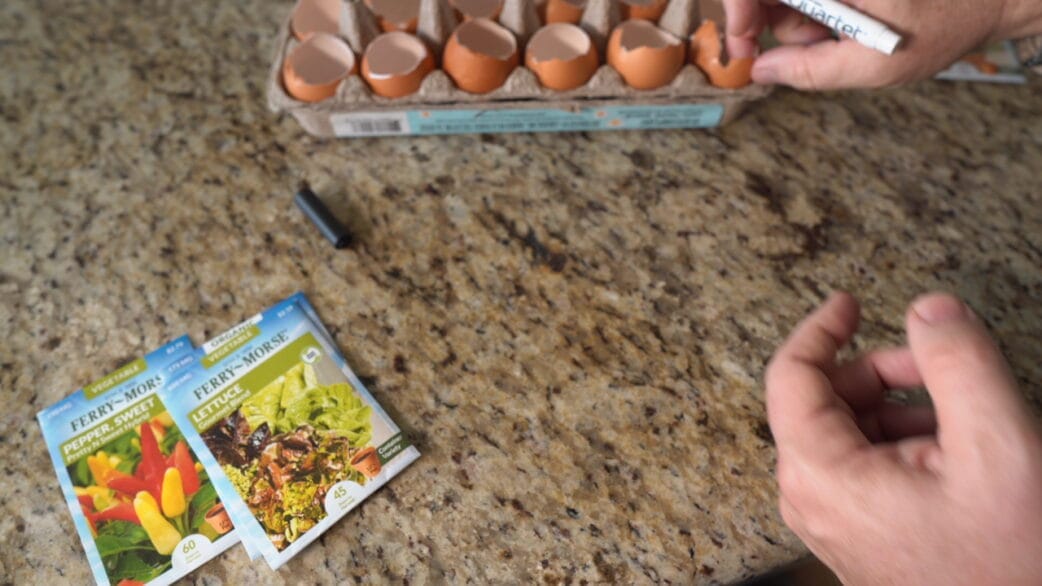
Once the eggshells are prepped and ready, it’s time to label each one. This step is often overlooked but is incredibly important, especially if you’re planting multiple types of seeds. Writing directly on the eggshell with a permanent marker ensures you can easily identify each plant as it grows. This prevents confusion and helps you keep track of your seedlings, particularly since many plants can look similar in their early stages of growth.
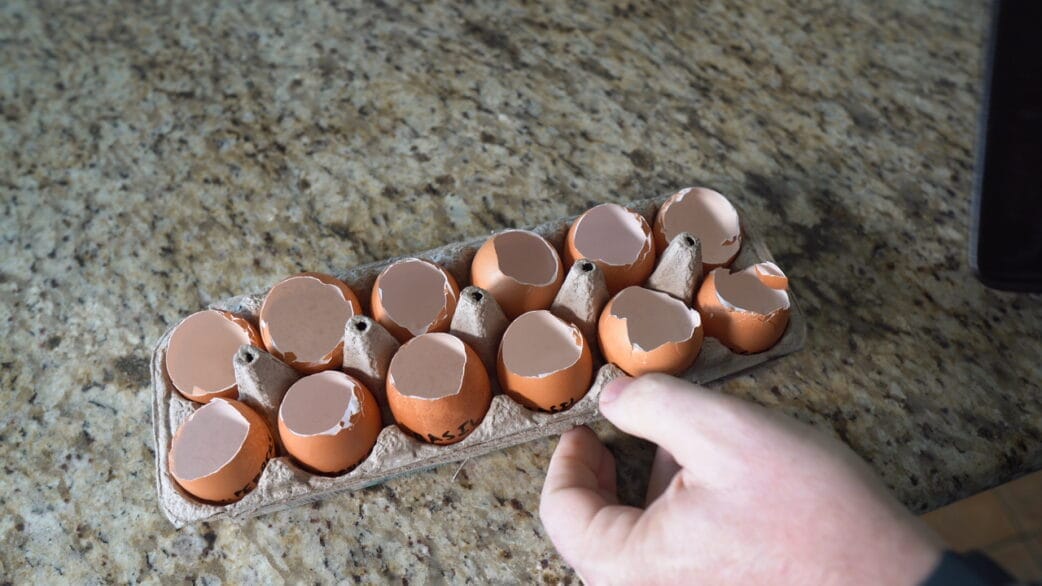
With the eggshells labeled, they can now be placed in an egg carton or seedling tray for easy organization. This keeps the eggshells stable and makes it convenient to move them around as needed, whether for watering or exposure to sunlight. Be sure to choose a high-quality potting mix suitable for the types of plants you’re growing.
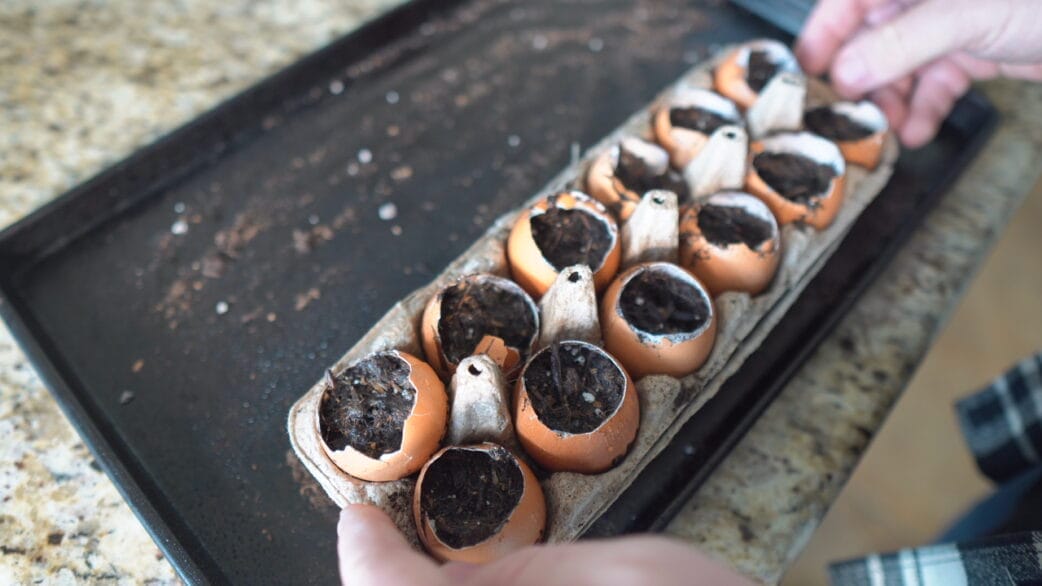
Next, fill each eggshell with potting soil, leaving some space at the top for the seeds. The soil provides the necessary nutrients and support for the seeds to germinate and develop into healthy seedlings.
Once the eggshells are filled with soil, it’s time to plant the seeds. For this example, I am using basil, chives, dill, sweet peppers, and lettuce, so I won’t need to cull any plants but the peppers. Plants like peppers, tomatoes, or squash are solitary plants. Multiple seedlings would compete for resources, and they would all end up smaller than when planted individually. If you can’t bear to throw out a plant, you can cull the seedlings into their own eggshell with their own potting soil to allow them to be planted later in your garden. Whether you sow herbs, flowers, or vegetables, gently press the seeds into the soil-filled eggshells according to the planting instructions for each specific plant variety. I plant about three seeds per eggshell of the non-bunching plants, and more of the ones that grow tightly together are fine. Then, depending on the type of plant, I may cull out two of the seedlings and leave the best plant in the eggshell.

After planting, lightly water the soil to moisten it. Avoid overwatering, as this can lead to rotting seeds or seedlings. A gentle sprinkle of water is usually sufficient to hydrate the soil without saturating it.
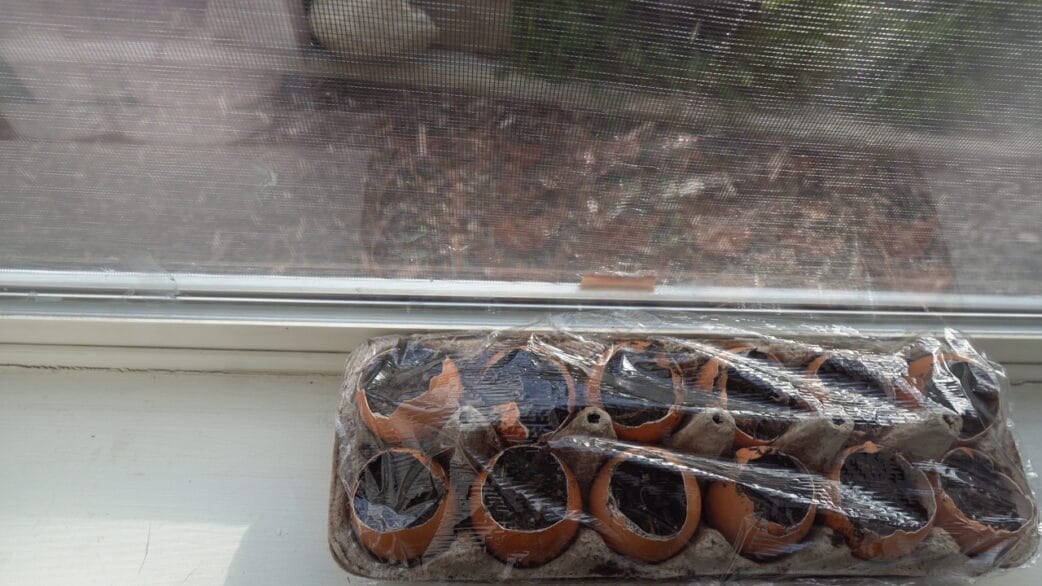
I loosely cover the eggshells with plastic wrap at this early stage. This will trap the moisture inside and keep the seedlings slightly warmer. Seeds need a certain level of warmth and moisture, so if you are doing this in the winter when temperatures on window sills may be low, you won’t want to skip this step. This will also keep you from having to water twice daily. The environment will encourage them to grow faster. Placing the base in the crate’s lid will help keep the plastic down on top of the eggs.
Place the eggshell seedlings near a sunny window or under a grow light. You will want the window to receive as much direct sunlight as possible. Even in the heat of summer, there is little chance of cooking the seed with this method. Pepper seeds, for instance, require a soil temperature above 80 degrees, so basically like a sauna.
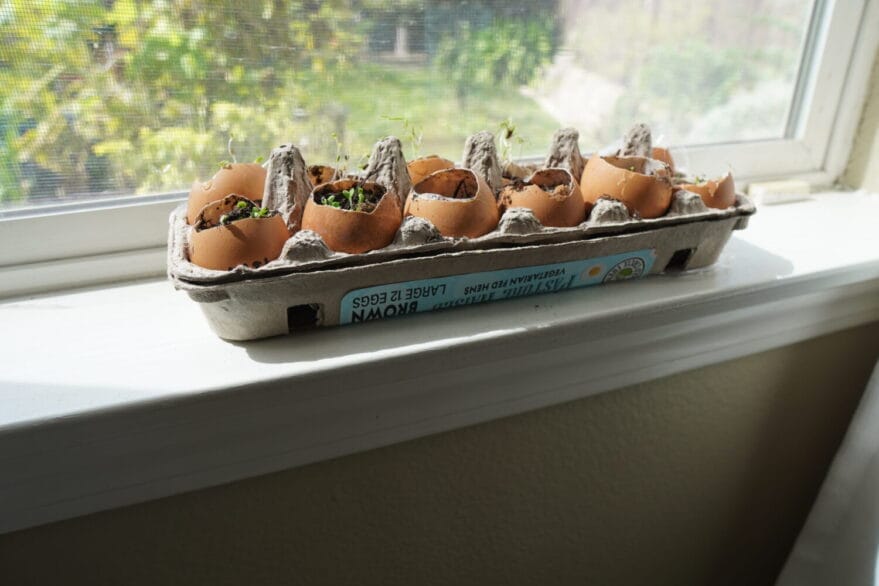
Water as needed to keep the soil consistently moist, but with this plastic wrap method you likely won’t need to water. Depending upon what you planted, you should see seedlings within a few days. Once they are all showing their first set of leaves, remove the plastic wrap. Different seeds will have different germination rates. Some will sprout in mere days, whereas a pepper seed can take up to 21 days. Once the seedlings have grown a few inches or have a hearty set of leaves like this basil, you can transfer them eggshells and all to your garden area or a larger pot. If I were planting these outdoors where snails or other critters might eat them, I would wait until they are at least two inches. Because I am planting these indoors, I can put them right in my indoor pot and then just make sure they are watered frequently. To do this, you will want to squeeze the shell gently so it breaks in multiple places. That will allow the roots to escape the shell. You definitely want to make sure the bottom is broken off so the roots can dig deep. I will also plant the chives, though I should probably wait to see more sprouts coming up. Give them a very good watering at this stage.
As your plants grow, ensure they receive adequate sunlight and water. Keep an eye out for any signs of pests or diseases and address them promptly to ensure the health of your plants. Gradually acclimate your seedlings to outdoor conditions if you plan to transplant them into your garden. This can be done by gradually increasing their exposure to outdoor elements over several days. I typically put my plants out when warm enough for an hour’s worth of shaded light for one day, then two hours the next day, and continue to work up the time. If night-time temperatures exceed 50 degrees, you can allow them to overnight. If you monitor them and see signs of stress, yellowing, or drying out, bring them indoors and check moisture levels. By following these steps, you can enjoy the satisfaction of growing your own plants from seedlings in repurposed eggshells.
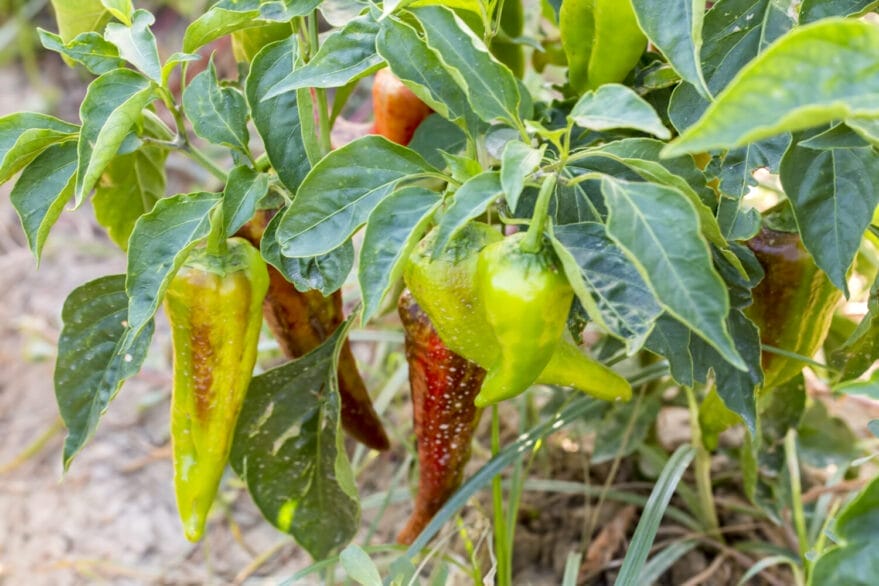
Here’s why this will give you better vegetables. Over time, the calcium from the shells will break down in the soil. Calcium breakdown is a gradual process, but calcium is critical to the plant forming good cell walls and healthy skin. The roots of the plant will then take that calcium up. If you notice that your peppers or tomatoes get sun scorch marks or problems with the skin being thin, it may be because your soil lacks calcium. Calcium, crucial for vegetable plants, serves multiple vital functions. It contributes to strong cell wall development, enhancing the plant’s resistance against pathogens. Calcium activates specific enzymes that regulate growth processes and metabolic activities, and it facilitates the uptake of nitrate, an essential nutrient, ensuring efficient nutrient absorption and overall plant health.
As always, stay safe out there.
